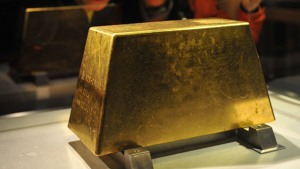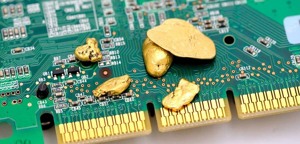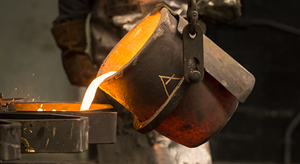Tavex uses cookies to ensure website functionality and improve your user experience. Collecting data from cookies helps us provide the best experience for you, keeps your account secure and allows us to personalise advert content. You can find out more in our cookie policy.
Please select what cookies you allow us to use
Cookies are small files of letters and digits downloaded and saved on your computer or another device (for instance, a mobile phone, a tablet) and saved in your browser while you visit a website. They can be used to track the pages you visit on the website, save the information you enter or remember your preferences such as language settings as long as you’re browsing the website.
| Cookie name | Cookie description | Cookie duration |
|---|---|---|
| tavex_cookie_consent | Stores cookie consent options selected | 60 weeks |
| tavex_customer | Tavex customer ID | 30 days |
| wp-wpml_current_language | Stores selected language | 1 day |
| AWSALB | AWS ALB sticky session cookie | 6 days |
| AWSALBCORS | AWS ALB sticky session cookie | 6 days |
| NO_CACHE | Used to disable page caching | 1 day |
| PHPSESSID | Identifier for PHP session | Session |
| latest_news | Helps to keep notifications relevant by storing the latest news shown | 29 days |
| latest_news_flash | Helps to keep notifications relevant by storing the latest news shown | 29 days |
| tavex_recently_viewed_products | List of recently viewed products | 1 day |
| tavex_compare_amount | Number of items in product comparison view | 1 day |
| Cookie name | Cookie description | Cookie duration |
|---|---|---|
| chart-widget-tab-*-*-* | Remembers last chart options (i.e currency, time period, etc) | 29 days |
| archive_layout | Stores selected product layout on category pages | 1 day |
| Cookie name | Cookie description | Cookie duration |
|---|---|---|
| cartstack.com-* | Used for tracking abandoned shopping carts | 1 year |
| _omappvp | Used by OptinMonster for determining new vs. returning visitors. Expires in 11 years | 11 years |
| _omappvs | Used by OptinMonster for determining when a new visitor becomes a returning visitor | Session |
| om* | Used by OptinMonster to track interactions with campaigns | Persistent |
| Cookie name | Cookie description | Cookie duration |
|---|---|---|
| _ga | Used to distinguish users | 2 years |
| _gid | Used to distinguish users | 24 hours |
| _ga_* | Used to persist session state | 2 years |
| _gac_* | Contains campaign related information | 90 days |
| _gat_gtag_* | Used to throttle request rate | 1 minute |
| _fbc | Facebook advertisement cookie | 2 years |
| _fbp | Facebook cookie for distinguishing unique users | 2 years |
20 Interesting Facts About Gold

Gold has fascinated humanity since ancient times, not just for its beauty but also for its unique properties and its wide range of uses. Here are 20 fascinating facts about this precious metal that you may not know:
1. The World’s Largest Gold Bullion Bar

In Japan, the Mitsubishi Materials Corporation holds a record with a gold bar weighing 250 kilograms (551 pounds). This massive bar is not only a testament to gold’s malleable properties but also to its enduring appeal in large-scale form.
2. Gold’s Global Discovery
Gold has been unearthed on every continent, including Antarctica where it was found in 1979. This wide distribution of gold in the world has made physical gold a central element in many cultures and economies around the world.
3. Gold Inside the Human Body
Humans have approximately 0.2 milligrams of gold in their bodies, primarily located in our blood. This trace amount plays a role in maintaining joint health in the long term and helping to transmit electrical signals throughout the body.
4. Gold Recovery from Electronics

Recycling electronics can be more lucrative than mining ore.
From a single ton of discarded computer parts, more gold can be extracted compared to 17 tons of gold ore
This makes e-waste recycling not only environmentally beneficial but also economically advantageous when extracting gold in large amounts.
5. Composition of Olympic Gold Medals
The Olympic gold medal is mostly made from silver and is coated with just 6 grams of gold
Despite its minimal gold content, the medal’s symbolic value is immense.
6. Oceans’ Hidden Gold
It’s estimated that the world’s oceans contain about 20 million tons of gold, suspended in normal seawater. However, the concentration is so minute that large-scale extraction remains economically unfeasible.
7. Rarity of Gold Compared to Steel
Steel production vastly outstrips that of gold, with more steel produced in an hour than gold mined throughout human history. This rarity underlines the precious nature of gold and explains the higher price of gold than steel.
8. Gold’s Extraterrestrial Origins
Scientists believe that much of Earth’s gold came from the bombardment of meteorites about 200 million years after the planet formed. This cosmic origin adds a layer of mystique to the already valuable element.
9. Melting Point of Pure Gold

Gold melts at a temperature of 1063°C (1945°F)
This relatively low melting point for a metal makes it easier to work with in various industrial and gold jewelry applications.
10. Dominance of South African Mines 🇿🇦
Witwatersrand in South Africa has been the most prolific gold mining area in the world. Since the late 19th century, it has produced almost half of all the gold ever mined.
11. Indian Housewives’ Gold Holdings

In India, private gold holdings are immense, with Indian housewives estimated to own more gold than the reserves of the US, IMF, Switzerland, and Germany combined. This reflects the deep cultural and financial importance of this yellow metal in India.
12. Australia’s Million Dollar Coin 🇦🇺
The Australian Kangaroo One Tonne Gold Coin minted by the Perth Mint is the most valuable coin in the world, made of 99.99% pure gold and valued far above its nominal face value of $1 million due to its gold content.
13. Un-mined Gold Reserves
There are still about 52,000 tons of gold in the ground, potentially worth over $2 trillion at current prices, which could have significant economic implications if extracted.
14. Gold Recycling by Apple

In 2015, Apple demonstrated its commitment to sustainability by recovering 2204 pounds (nearly 1,000 kilograms) of gold from recycled iPhones. This endeavour highlights the value of recycling precious metals from electronic waste. It is worth about 40 million USD.
15. The Gold of Asteroid Eros
NASA’s studies suggest that asteroid Eros could contain 20 billion metric tons of gold, an amount that could revolutionise the gold market if space mining becomes economically and technologically feasible.
16. The Symbolism of Gold’s Chemical Designation
The chemical designation for gold in the periodic table is Au, which comes from the Latin word for gold – aurum, meaning “shining sunrise” or “glow of dawn”.
The word gold comes from the Germanic language stem and derives from the proto-Germanic word ‘gulþ’ and the proto-Indo-European word ‘ghel, which means “yellow/green”. The element has been known since ancient times.
17. Gold’s Non-toxicity
Unlike many heavy metals, gold is non-toxic and inert. This allows for its safe use in medical applications and even in food and beverages as decorative gold leaf.
18. Versatile Uses of Gold
Gold’s excellent conductivity and resistance to tarnish make it indispensable in high-end electronics, dentistry, and various other fields. Its utility extends beyond ornamental value.
Read more here about golds other industrial uses.
19. Gold and Infrared Rays

Gold is used in window glass and in space technology in astronauts’ helmets to reflect away infrared rays while allowing sunlight to pass through, but still keeping it cool.
20. Gold in Rheumatoid Arthritis Treatment
Gold salts are used in medicine to treat rheumatoid arthritis, where they are injected into muscles to help alleviate symptoms, showing a 70% success rate in the United States.
These intriguing facts demonstrate not only gold’s beauty and value but also its utility in a variety of fields from technology and space exploration to medicine. The journey of gold from ancient treasures to modern technology and beyond continues to be a compelling story of human innovation and the exploitation of one of Earth’s most valuable resources.

















